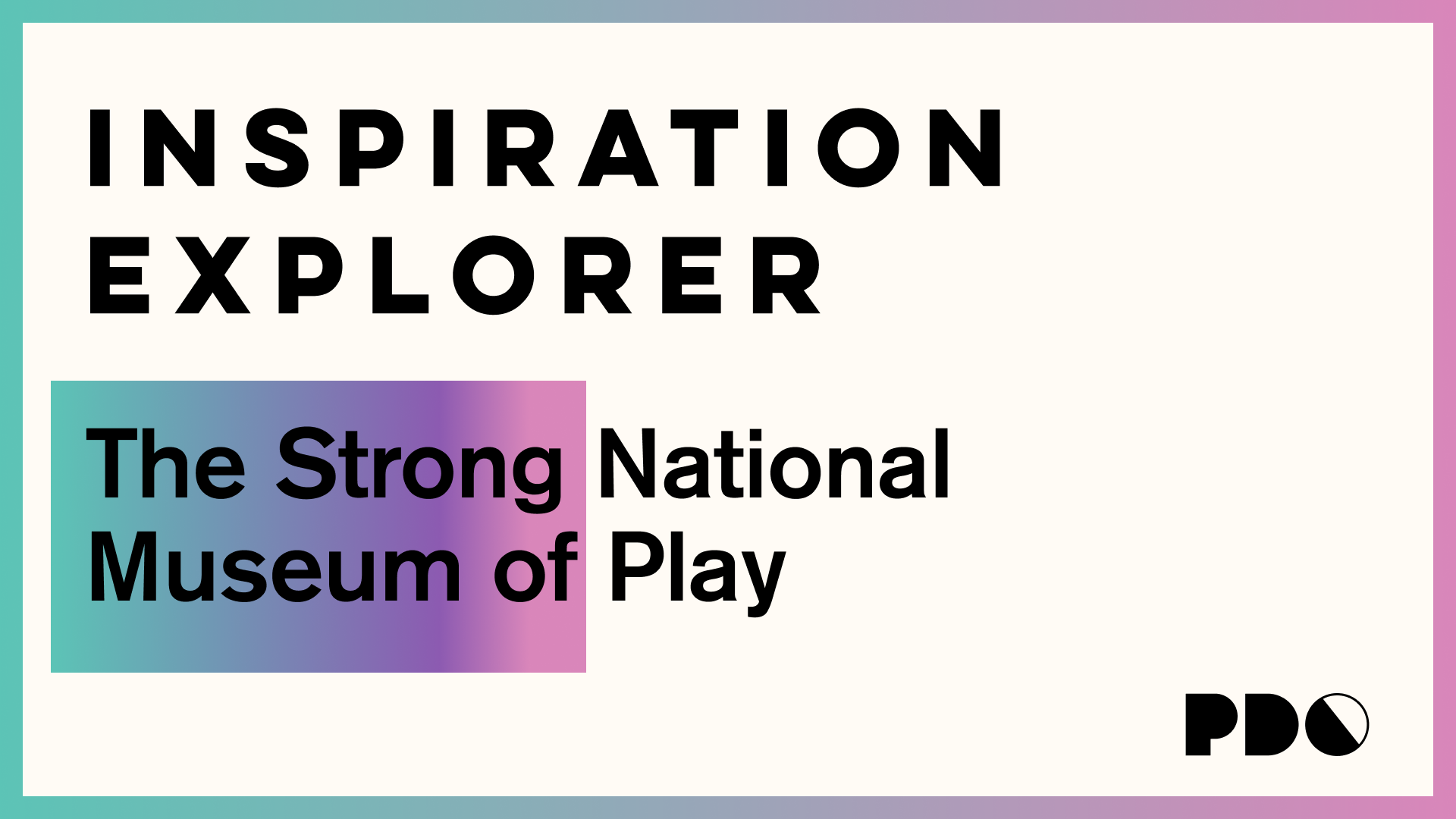
I am lucky enough to be an aunt to ten little nieces and nephews. Over the years I have been to tons of museums with them, but the Strong National Museum of Play has always held a special place in my heart. As a graphic design student in college, I loved the dynamic exhibit design and the reproduction Sesame Street set. Once I started working in film, I realized that the museum packed a double punch; the changing exhibits include incredible research, props and storytelling, and the second floor of the museum is a massive collection of toys spanning decades. While this isn’t a traditional resource for production design, every visit I leave thinking about spatial interactions and objects in a new way.
About the Strong National Museum of Play
The Strong houses the world’s largest and most comprehensive collection of historical materials related to play and is home to the International Center for the History of Electronic Games, the National Toy Hall of Fame, and the World Video Game Hall of Fame, among others.
The museum combines interactive exhibits with object collections, creating an experience that can be enjoyed by kids, families and scholars. The lower level exhibits are all interactive and geared towards children. Permanent installations include a mini-Wegmans grocery store, Sesame Street, carousel and train history and several reading and arts areas.
I think these exhibits show incredible problem solving and interesting use of space, both key elements in Production Design. Each exhibit combines exhibit design, narrative storytelling and creative problem solving, so there is always something to learn by observing them.
How is a museum of “play” helpful to production design?
The textures and materials of old toys, and objects in general, can play an integral role in establishment of a time period or tone in a project. Bakelite plastic, Barbie and Pokemon all translate into different meanings - the brands, materials and even colors all speak to different time periods, cultures and groups of people. Wandering though the historic toy exhibit helps bring focus to the smallest details of a story. The timelines of the exhibit also tell important stories about America and US consumerism, both of which can be translated into the visual design of a project.
Personal Highlights
The Fun House - While this exhibit may be gone, it is a prime example of the innovative exhibit design at The Strong. The walls and floors of the space were build at angles, creating a set in forced perspective. Getting a chance to see a set built in forced perspective, and being able to walk around in it was a lot of fun.
Barbie - No single brand says more about American consumerism then Barbie. The Strong collection includes more than 2,500 dolls and Barbie related items, and highlights changes in body image, marketing and design since the dolls inception in 1959.
Miniatures and Dollhouses
Maybe it’s just me, but I love thinking about spaces in miniature. The Strong collection includes more than 20,000 miniature items, as well as 200 miniature rooms and settings. The collection spans from the handcrafted pieces of the 18th century to cast iron and plastic mass-production of more recent years.
Arcade & Pinball Games
The graphic style of old video and pinball games has always interested me. I love that you can tell so much about the style and feeling of a decade by how the games were designed. The Strong’s arcade collection ranges from 1971 to present, and includes a huge variety of games. They also have personal computers, handheld games and consoles form the 1970’s, often in working condition.
Spatial Problem Solving
Beyond the historical artifacts and nostalgic collections, one of the most impressive and inspiring characteristics of The Strong is how they incorporate dozens of exhibits seamlessly into a massive space. As Production Designers we often have to work around circumstances that are beyond our control, making spaces work and finding the balance between design and production. The sheer volume of design, children and information at The Strong is an impressive balance between those same things.
Every visit teaches me something new - vintage graphics, interesting construction methods, new materials and even innovative ways to use projection and screens. The Strong isn’t a traditional research facility for Production Designers, but each trip leaves me thinking about new ways to construct space, and how the details like toys and packaging can impact a narrative.











